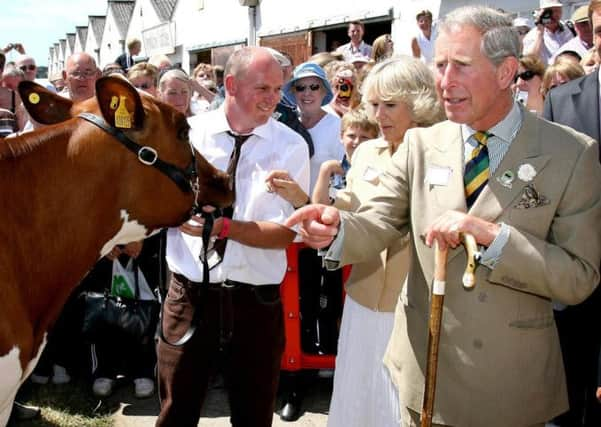Industry used to a crisis shows an appetite for survival


The very idea of a vibrant rural community without farming is as ridiculous as the notion that you can have a vibrant railway network without any trains, the Prince of Wales said in a speech at the Oxford Farming Conference in 2013.
But farming has come under many threats in various forms over the last ten years and those threats came off the back of modern British agriculture’s biggest terror, Foot and Mouth disease, which saw 133 outbreaks in North Yorkshire alone in that dreadful year for farming, 2001.
Advertisement
Hide AdAdvertisement
Hide AdSince then our region’s farmers have been busy building back up their livelihoods in a climate of often maddening regulation and policy changes dictated by European politicians. But it has been a period in which technology has begun to come more and more to the fore, from increasingly precise methods of arable farming, to new generations of robotic milking parlours, and now, electronic tagging of sheep.
The undulating fortunes of farming have also been influenced by industry changes and unseasonal weather conditions.
Back in 2005, one of the biggest and most controversial threats to the rural way of life came from the inception of the fox hunting ban. After hundreds of hours of political debates and protests that even spilt over into the House of Commons chamber itself, the countryside pursuit was banned.
A repeal of the ban remains a lobbying point by pro-hunt organisations who admit, while the pursuit has changed, the social scene that has always accompanied it has been maintained. However, with reports of intimidation by countryside activists intent on disrupting hunts in their current form, it seems a matter of time before the subject becomes a hot political issue once again.
Advertisement
Hide AdAdvertisement
Hide AdOf greater financial consequence for many of the region’s farmers was the closure in 2006 of British Sugar’s factory in York. As processing became more and more centralised, a crop that was once a source of significant income for many dried up.
When the York factory did shut, it was the many farmers who were still supplying sugar beet on a small scale, who drove their tractors to the factory gates, who were hardest hit. Few persevered with the crop with the next nearest British Sugar factory now out of their area, at Newark in Nottinghamshire.
Almost 1,300 growers in the region were affected, and another 1,500 people employed in associated industries such as haulage were said to have been in line to feel the pain.
But it was a year that certainly was not all bad news. It was in 2006 that, after ten years, the European Commission ban on British beef exports officially ended.
Advertisement
Hide AdAdvertisement
Hide AdThe ban, a consequence of the BSE outbreak in 1996, had held back the damaged UK beef industry which had, before the disease crisis, been worth more than £500m a year.
The year 2006 was a stellar one for what is now considered by many to be England’s premier agricultural show, the Great Yorkshire Show in Harrogate, which attracted a record attendance of 135,111 – a vote of confidence in the farming industry in itself, if one was indeed needed.
Foot and Mouth was again on the radar the following year when an infection was confirmed on farmland in Surrey.
A cull was carried out and a nationwide ban on the movement of cattle and pigs was imposed. Two further outbreaks were detected – thankfully far from Yorkshire’s borders – again in Surrey and then in Solihull.
Advertisement
Hide AdAdvertisement
Hide AdIt was a washout year for farmers here too as the county was inundated with largely unprecedented flood waters over the summer. Huge swathes of land rich with crops were under water – wheat, barley, potatoes, oilseed rape and others written off.
More than 6,000 acres of agricultural land across Yorkshire was under flood water for much of June and July.
In the same year, bluetongue disease, a virus that had killed livestock across Europe was found in the UK for the first time, in a cow at a farm in Suffolk.
The Great Yorkshire Show continued to attract impressive six-figure crowds over its three days in July, and 2008 was the 150th show, prompting a timely appearance by The Queen.
Advertisement
Hide AdAdvertisement
Hide AdThe Prince of Wales would also attend in 2011, among other Royal visitors who graced the event over the last ten years.
In 2012, the show was cancelled after one day as a result of summer downpours for the first time in 154 years. That first day had already seen dairy farmers protest outside the trade stands of retailers, upset at low milk prices.
It was the year of the SOS Dairy campaign when consecutive price cuts left farmers receiving less than the cost of production. Six hundred farmers gathered at Staffordshire Showground to vent their anger.
Farmers targeted processors and blockades were staged at Arla dairies in Leeds and Leicestershire.
The horsemeat scandal erupted in January 2013, the same year as the first pilot badger culls to tackle another menace, the spread of bovine TB – a battle that continues.